


John Singer Sargent 1856 – 1925
Gertrude Vernon, Lady Agnew of Lochnaw (1864–1932), 1892
Oil on canvas, 127 × 101 cm
National Galleries of Scotland

Unknown photographer
Photograph 17 x 22cm
Private collection




John Singer Sargent 1856 – 1925
Gertrude Vernon, Lady Agnew of Lochnaw (1864–1932), 1892
Oil on canvas, 127 × 101 cm
National Galleries of Scotland

Unknown photographer
Photograph 17 x 22cm
Private collection
Sargent emerges from contemporary accounts as an intriguing, exceptionally accomplished and attractive figure (fig.1). He was born in January 1856 in Florence, the son of wealthy, itinerant Americans; his father was a surgeon and his mother an amateur painter, who encouraged him in his artistic vocation. They provided the sophisticated and cultured world in which he grew up; his childhood was spent visiting the cities of Europe, reading widely, acquiring skills as a linguist, a musician and most significantly as a passionate enthusiast for the visual arts. He attended art schools in Italy and Germany, and then in 1874 became a student in Paris in the studio of the painter Charles Auguste Émile Durand (1837–1917), who was known as CarolusDuran. The two men became friends and Carolus-Duran provided Sargent with valuable experience: he was a fashionable portrait specialist but also worked on decorative projects, such as a ceiling in the Palais du Luxembourg, with which Sargent assisted.
Sargent also learnt from Carolus-Duran of the significance of studying old master portrait painters, such as the seventeenth-century artists Frans Hals, Sir Anthony van Dyck and Diego Velázquez – all of whom were renowned for the virtuosity of their painterly technique and ability to study and convey character. He travelled extensively, seeking out their works, and these influences filtered into his own painting in various ways, although always with great subtlety.
Among the most beautiful and daring consequences of such study was his 1882 portrait of The Daughters of Edward Darley Boit (fig.2). Boit (1840–1915) was an American artist and another friend of Sargent, and his daughters are depicted in an apartment in Paris that the family was renting. They are posed in a harmonious but irregular arrangement, like notes on a musical score, amid monumental oriental vases. The inspiration
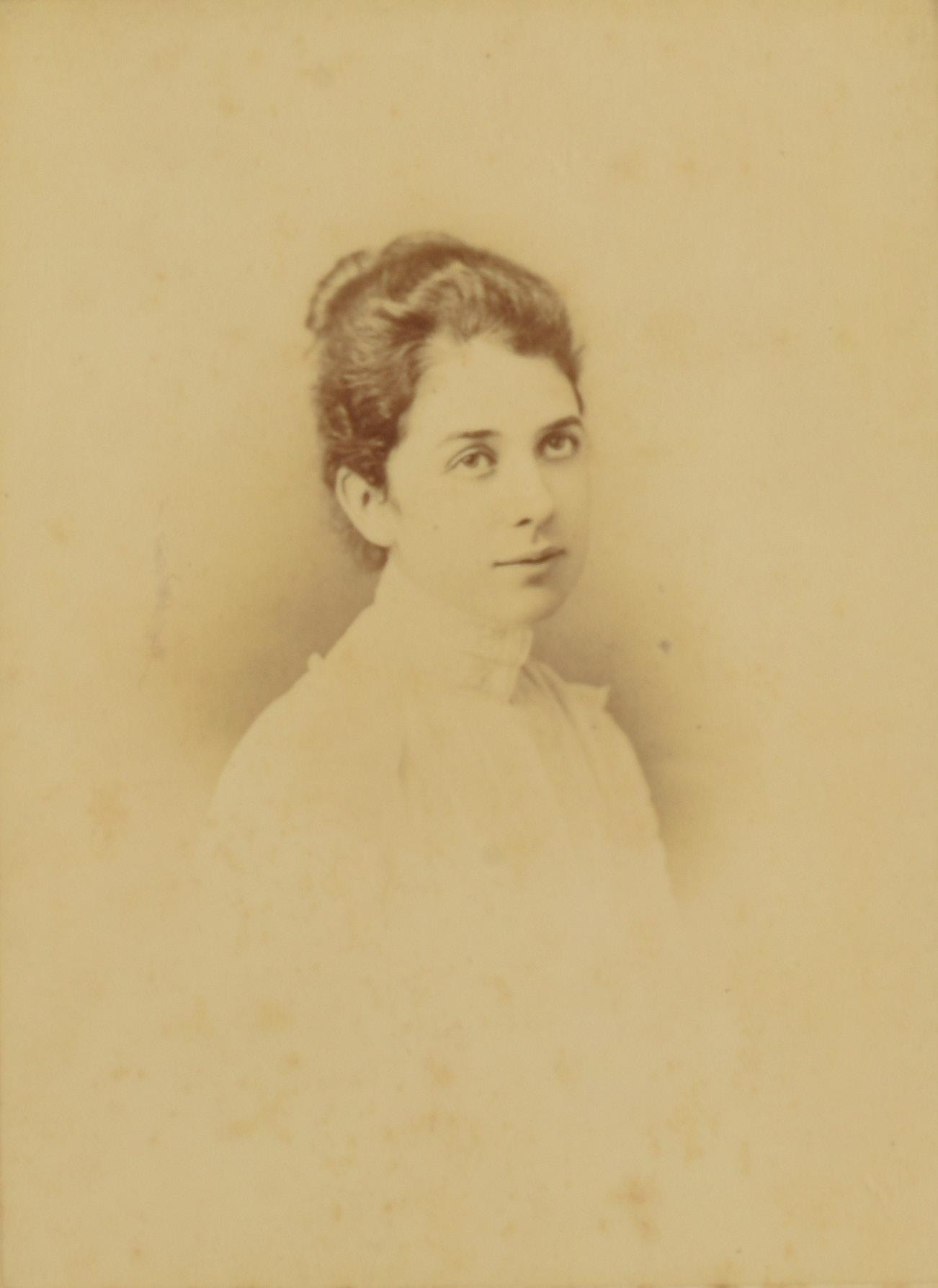
FIG. 10
Unknown photographer
Lady Agnew (Gertrude Vernon)
Cabinet portrait photograph on card, 16.5 × 10.6 cm
Private collection (Sir Crispin Agnew of Lochnaw Bt). National Records of Scotland. With kind permission of Sir Crispin Agnew
opposite FIGS 11 AND 12
Unknown photographer
Sargent’s Tite Street studio (west wall); Sargent’s Tite Street studio (north wall); Photographs, gelatin silver prints, 18.7 × 25.1 cm
Museum of Fine Arts, Boston. The John Singer Sargent Archive – Gift of Richard and Leonee Ormond
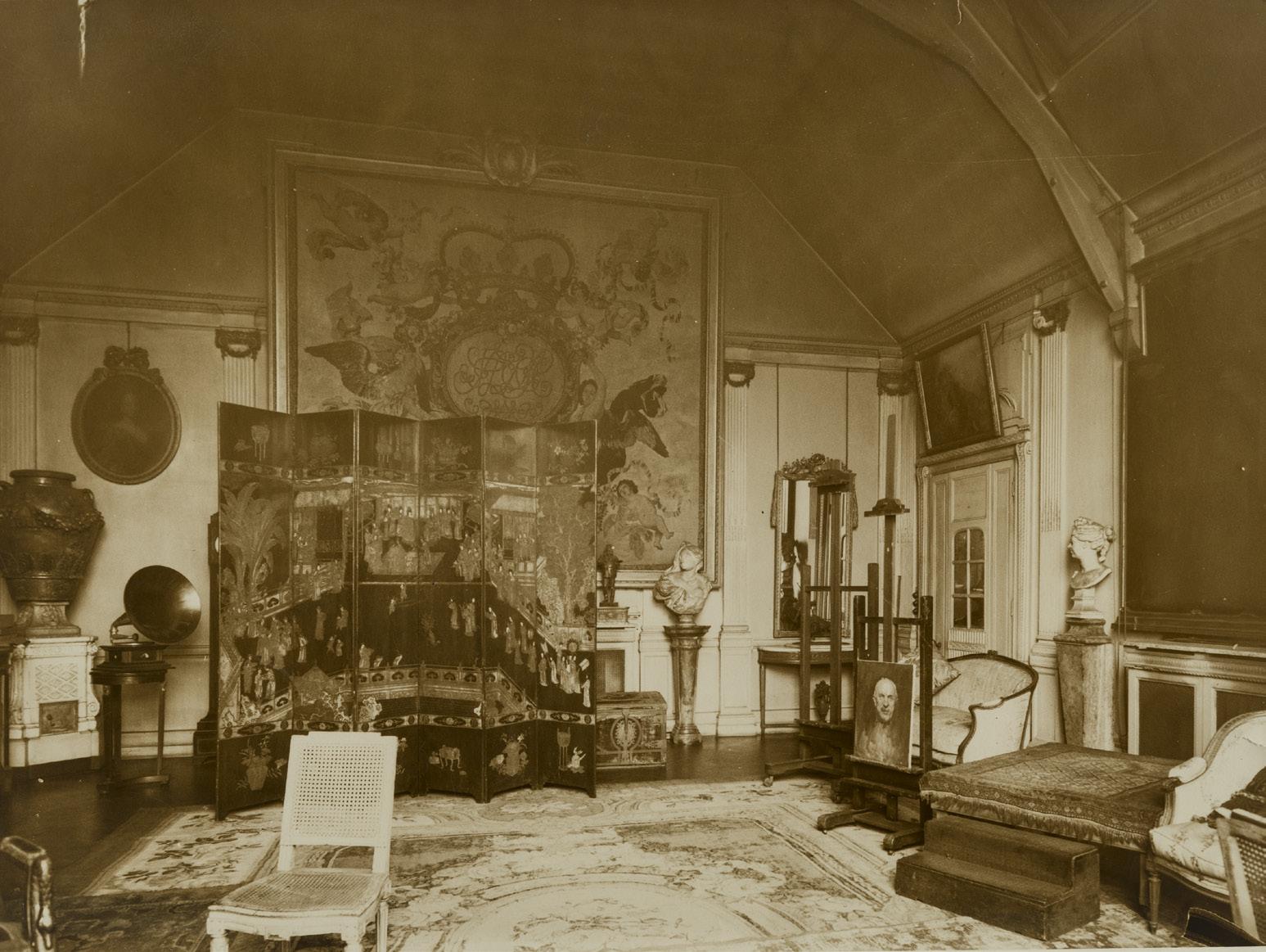
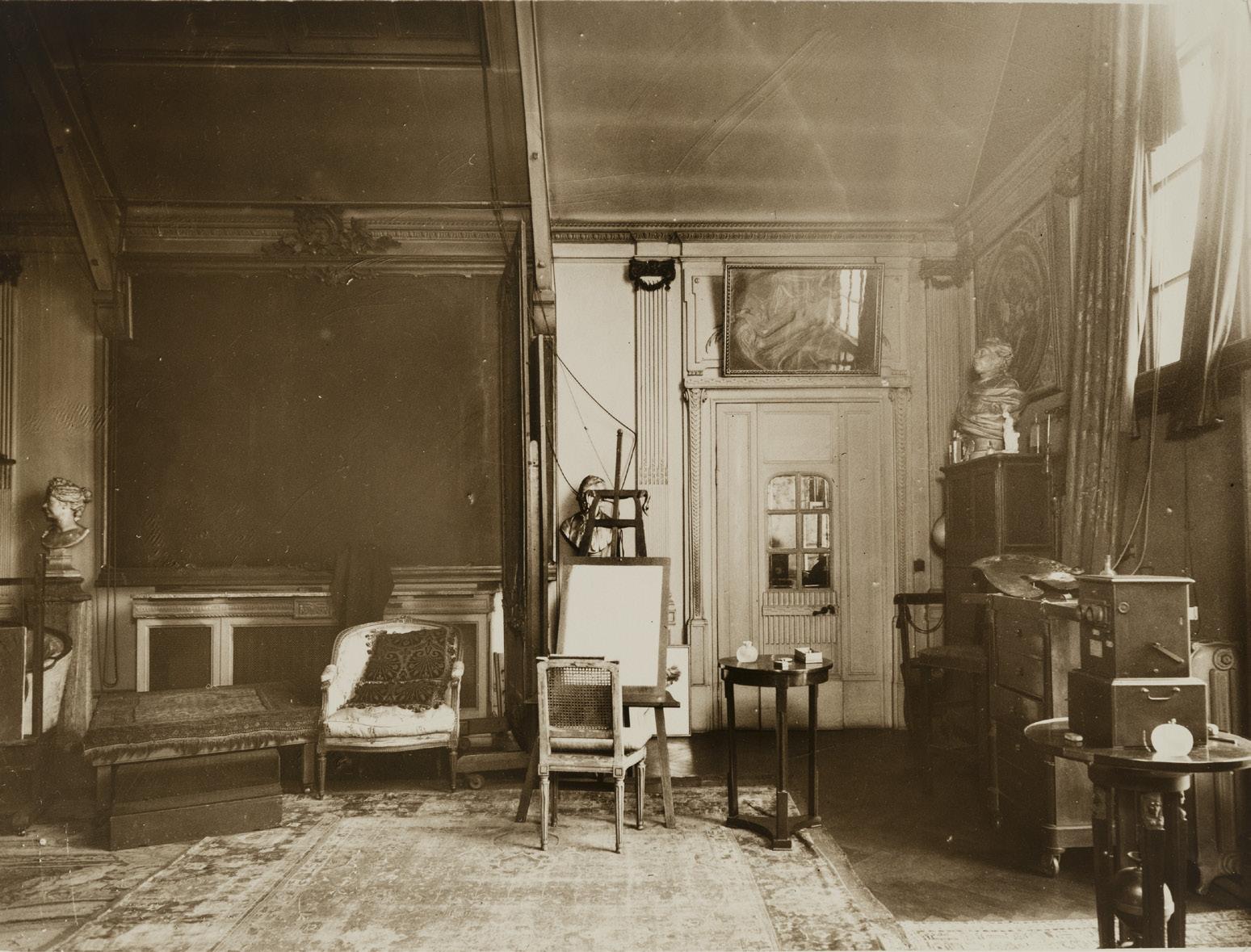
Street, where thirty-three years earlier he had painted Lady Agnew. A memorial service was held in Westminster Abbey and a sale of the contents of his studio was arranged at Christie’s.
It was after his death that the critical tide began to turn against Sargent’s work in some quarters: notably the writer and artist Roger Fry was among those who did not value his slick facility with paint and published his views. The market for the artist’s paintings remained buoyant, however, and it was in the mid-1920s that Lady Agnew decided to sell her portrait. The cost of being a society hostess had been met in part by the sale of Lochnaw land, but she decided to part with the painting to raise further funds.
At first, through an intermediary, she offered it to the Frick Collection in New York – this was a smart move as Sargent’s paintings were closely connected with the so-called ‘Gilded Age’ of late nineteenth-century East Coast high society with which Henry Clay Frick was intimately associated. Somewhat surprisingly his daughter, the collector Helen Clay Frick, did not take up the offer, so next an approach was made to the National Gallery of Scotland. At first, it was not possible to act on this, because at the time the work of living artists was not acquired by the Gallery. With the news of Sargent’s death, however, this impediment fell away and negotiations to purchase the portrait began.
In her correspondence, Lady Agnew explained she had thought about selling the picture in New York, but ‘I very much want it to remain over here it would look so very well in your Gallery & [Agnew] being an old Scotch name would be appropriate . . . It is a really fine painting as you know, finer work than almost all Sargent’. The price was £4,000, about eight times the sum her husband had probably originally
FIG. 19
Henry Macbeth Raeburn 1860–1947, after John Singer Sargent Gertrude Vernon, Lady Agnew of Lochnaw (1864–1932), date unknown Mezzotint on paper, 54 × 41 cm National Galleries of Scotland.
Purchased 1996
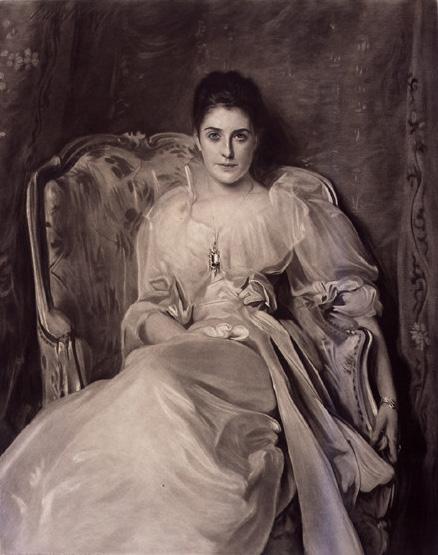
paid the artist. The money came from the bequest of James Cowan Smith (1839–1919), a generous benefactor, whose funds have been used over the years to acquire some of the National Galleries of Scotland’s most distinctive and admired paintings.
In 1926, Lady Agnew corresponded further with the Gallery about the possibility of an engraving being made after the portrait. She agreed to this as long as it was ‘a good one’ and noted that ‘at the time the picture was painted an engraving was suggested but Sargent himself did not think his pictures would engrave well – and did not wish it’. The mezzotint by Henry Macbeth-Raeburn RA (1860–1947) that resulted from such discussions is a fine record of Sargent’s composition, although it does not perhaps fully capture the subtlety of his character study of Lady Agnew (fig.19). She lived on for a further six years, in the knowledge that her painted portrait was gradually acquiring the status of one the most affectionately regarded works in Scotland’s national collection.
Lady Agnew’s portrait soon became a widely appreciated work in the context of its new home – the National Gallery of Scotland in Edinburgh, where it was almost always on show.
The artist and writer Stanley Cursiter (1887–1976) became keeper of the Gallery in 1925 and director in 1930, and made a series of miniature watercolours of key works in the collection in order to plot on paper the hanging plans for changing displays. Sargent’s painting was, of course, included among his semi-abstract studies (fig.20).
As well as being displayed and reproduced as a mezzotint, Sargent’s painting gradually became known more widely and used in other contexts. It is perhaps no surprise that it has been reproduced on a number of occasions on the cover of modern editions of the novel The Portrait of a Lady by Henry James
FIG. 20
Stanley Cursiter 1887–1976, after John Singer Sargent Gertrude Vernon, Lady Agnew of Lochnaw (1864–1932) 1930–48
Watercolour and pencil on paper, 13.2 × 10.9 cm
National Galleries of Scotland. Purchased 1991
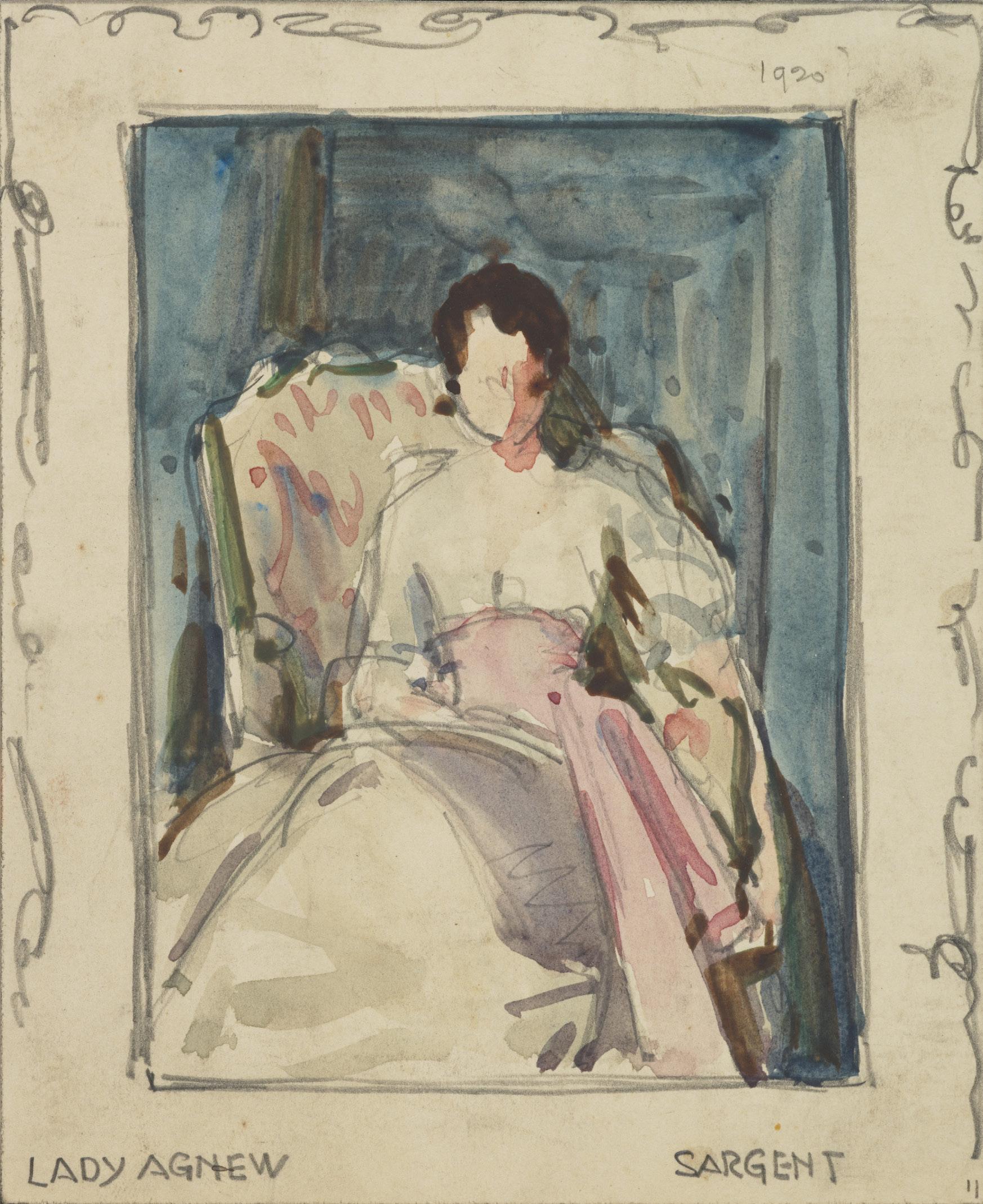
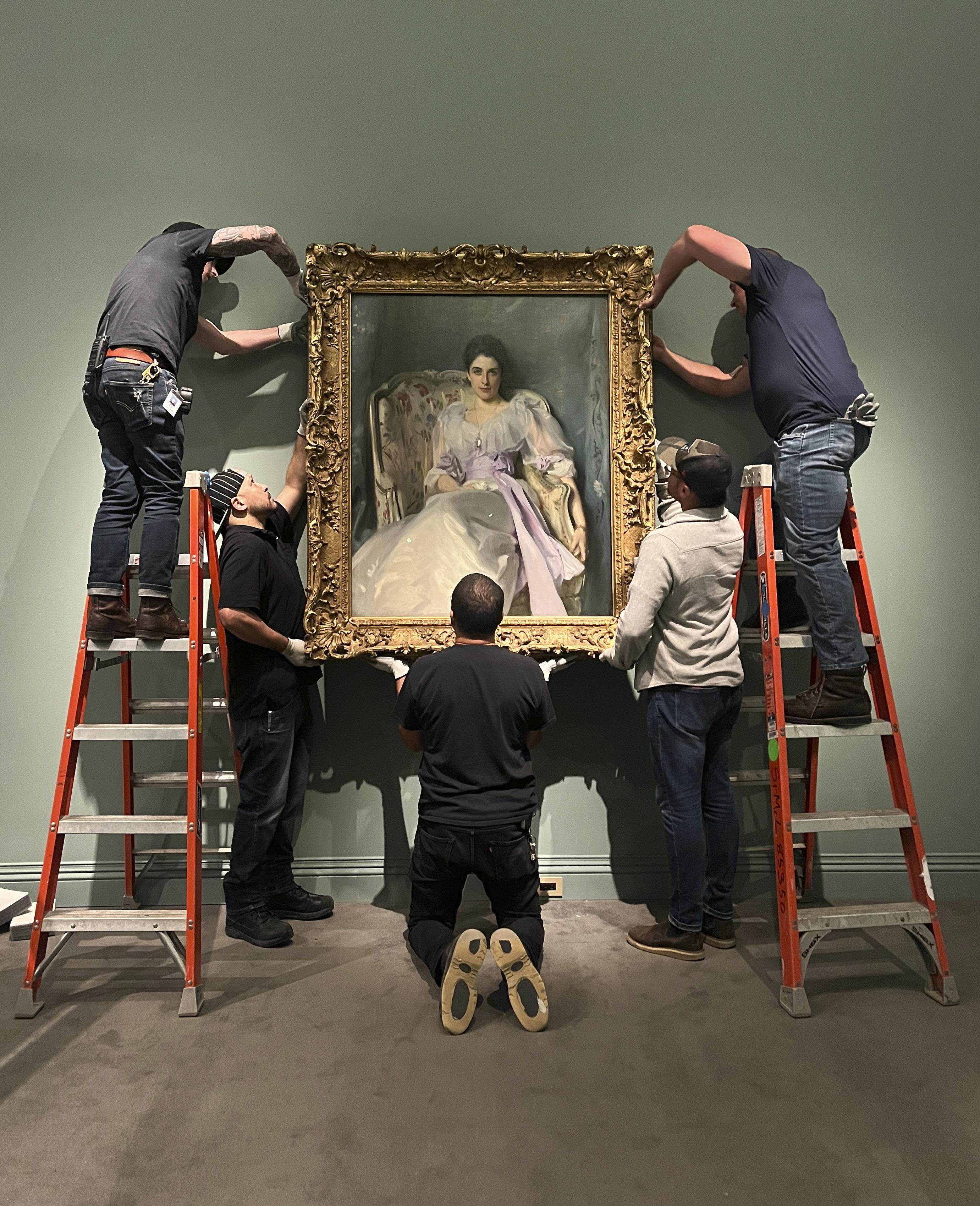

Can a portrait have a biography? This endlessly intriguing and resonant painting seems to justify such an approach, as Sargent’s Lady Agnew has not just taken on a life of its own, but in fact has had more lives than most works of the type. Its trajectory has taken it from a family commission to public and critical adulation in London’s galleries; from a private collection to a national asset, which has been admired and studied and exhibited around the world; and it is now a work that has come to inspire numerous creative and commercial spin-offs, which embrace Henry James and Hollywood.
There remains, however, a fundamental mystery at the heart of any study of this remarkable portrait: what the subject thought of it. Although Lady Agnew casually praised the painting when she was selling it, we have no detailed account of her estimation of it or indeed its effect on her life and reputation. It is the men in her circle and the wider art world – her husband, the artist and the critics – who provide most of the documentary and contextual evidence. It seems reasonable to imagine that she revelled in the celebrity status that it generated, but it is frustrating that this cannot be confirmed. Perhaps Lady Agnew’s own and indeed the painting’s quiet and sphinx-like qualities go some way to explaining its enduring appeal amid all this masculine comment.
An interesting parallel can be drawn between Gertrude Agnew’s reputation as formulated by the portrait and the world of obsessive celebrity creation that we currently inhabit. She was above all known for her beauty and was catapulted to the status of a star in the London social scene through her depiction and the media’s response to it. It would be unwise to take the comparison too far, but is worth noting that the celebritydriven popular culture now prevalent has a long history, and
22
Unknown photographer
Installing Lady Agnew of Lochnaw, 1892 for the Fashioned By Sargent exhibition at the Museum of Fine Arts, Boston, 2023
Museum of Fine Arts, Boston